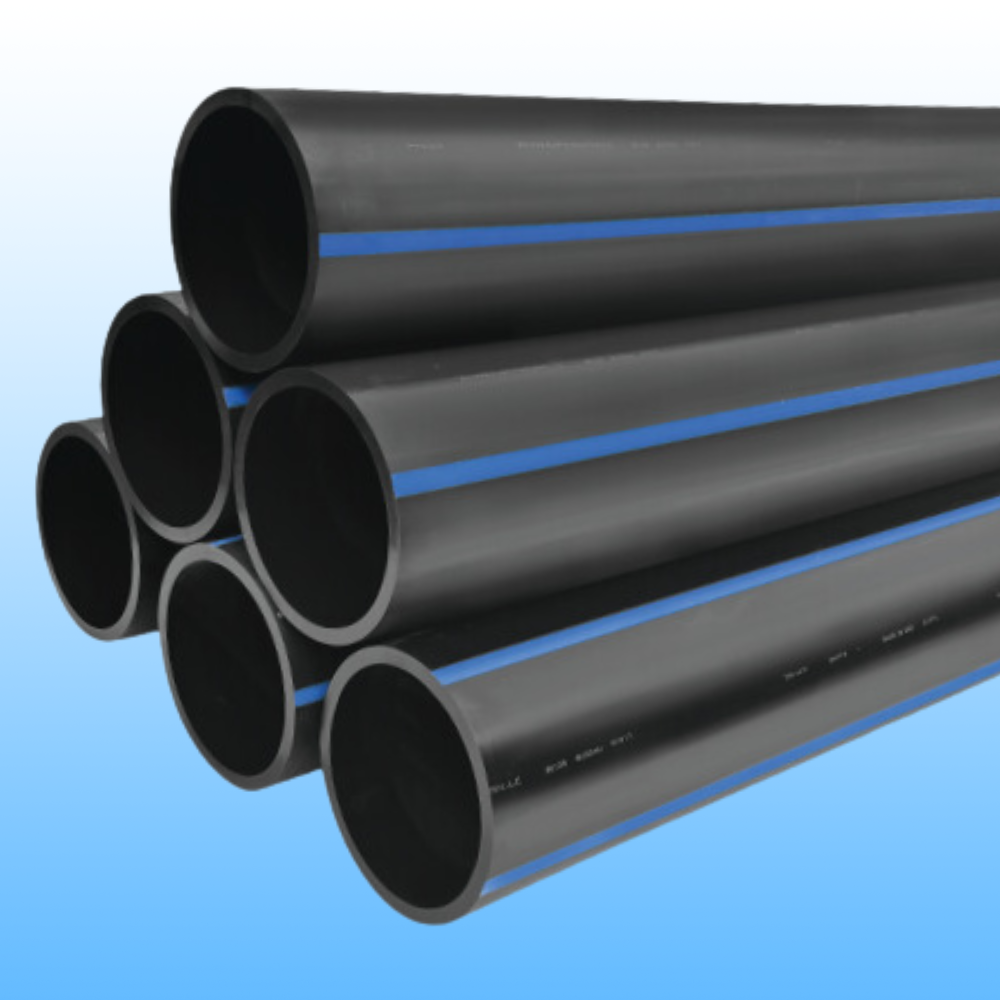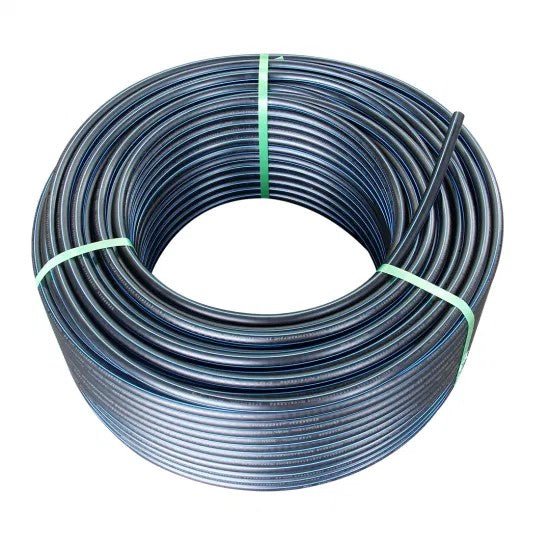Texas hdpe pipe manufacturer: Green Manufacturing
Check Out the Manufacturing Process Behind High-Quality HDPE Pipeline and Its Applications
The production process of premium HDPE pipelines is elaborate and methodical. It begins with the choice of resources that enhance performance. Following this, ethylene undertakes polymerization to create material, which is then shaped via extrusion. Quality assurance is critical, making sure that the end product meets rigid criteria. The journey of HDPE pipes doesn't finish with production. Their applications throughout different sectors disclose a broader significance worth checking out.
Recognizing HDPE: Residences and Advantages

High-density polyethylene (HDPE) is a functional thermoplastic recognized for its resilience and resistance to various ecological factors. This product shows exceptional tensile stamina, making it ideal for requiring applications. Its low-density structure adds to a light-weight item, promoting simplicity of handling and setup. HDPE likewise showcases amazing resistance to chemicals, which reduces degradation when exposed to rough compounds.
The material's reduced dampness absorption even more boosts its durability, making it excellent for usage in pipelines and tank. In addition, HDPE is resistant to ultraviolet (UV) radiation, ensuring that products maintain their honesty even when subjected to sunlight. Its versatility allows for the production of detailed shapes without endangering toughness. The eco-friendly nature of HDPE, often derived from recycled materials, contributes to its allure, advertising lasting practices in manufacturing. Overall, these residential properties and benefits make HDPE a recommended choice for different commercial and consumer applications.
Basic Material Option for HDPE Production
The option of raw products for HDPE manufacturing is important to confirm the end product satisfies the preferred requirements and quality requirements. High-density polyethylene (HDPE) is mostly produced from polymerized ethylene, derived from nonrenewable fuel sources such as gas or petroleum. The quality of these feedstocks greatly influences the mechanical and thermal residential or commercial properties of the final HDPE.
Additives additionally play a substantial duty in enhancing HDPE's efficiency, consisting of anti-oxidants, UV stabilizers, and colorants, which enhance sturdiness and resistance to ecological factors. The selection process have to take into consideration not only the chemical composition of the raw products however additionally their handling features to assure effective production.
The sourcing of raw products need to focus on sustainability and conformity with environmental regulations, as responsible techniques are essential in today's market. Ultimately, careful basic material option lays the foundation for creating high-quality HDPE pipelines suitable for varied applications.
The Extrusion Process: Forming HDPE Pipe
The extrusion process plays a crucial function fit HDPE pipelines, starting with precise material preparation techniques that assure suitable circulation and consistency. Similarly crucial is the design of the die, which straight affects the final dimensions and surface area high quality of the pipeline. Together, these factors contribute considerably to the effectiveness and top quality of HDPE pipe production.
Product Preparation Strategies
Efficient manufacturing of HDPE pipes begins with precise product preparation strategies, particularly the extrusion procedure. During this stage, high-density polyethylene material is initial dried out to remove moisture, making certain suitable flow attributes. The material is then fed right into the extruder, where it undergoes heating and melting, changing right into a thick state. This heating process is thoroughly managed to preserve the product's honesty and efficiency. The molten HDPE is required via a die, shaping it right into a continual pipe form. Appropriate temperature level monitoring throughout extrusion is essential, as it directly influences the product's buildings and the final item high quality. When formed, the HDPE pipeline is cooled down and reduced to specified lengths, prepared for succeeding handling and applications.
Die Layout Significance
Accuracy in die style plays a vital function in the extrusion process of HDPE pipes. The die functions as the last shaping tool, directly influencing news the pipe's measurements, wall surface density, and surface finish. A well-designed die guarantees consistent product circulation, reducing problems such as irregularities and vulnerable points. The geometry of the die need to be enhanced to suit the certain properties of HDPE, including its thickness and thermal habits throughout extrusion. Furthermore, the cooling rate of the product as it passes via the die can significantly influence the pipeline's architectural integrity. Consequently, buying innovative die innovation is important for producers intending to generate top notch HDPE pipes that satisfy industry requirements and client expectations.
Top Quality Control Procedures in HDPE Manufacturing
Although various variables influence the top quality of HDPE pipeline production, efficient top quality control steps are critical to guarantee uniformity and dependability in the final item. Secret high quality control techniques consist of extensive product inspection, confirming that the raw polyethylene meets well-known standards for purity and density. Throughout the extrusion process, parameters such as temperature, pressure, and cooling time are carefully monitored to maintain dimensional precision and architectural stability
In enhancement, post-production screening is important; producers often carry out hydrostatic tests to examine the pipe's stamina and resistance to stress. Aesthetic assessments for surface area issues even more improve high quality assurance. Qualification from appropriate criteria organizations, like ASTM or ISO, offers an extra layer of integrity. By executing these complete top quality control actions, makers can reduce defects, boost efficiency, and make certain that the HDPE pipelines fulfill the certain demands of different applications, eventually resulting in client fulfillment and count on in the item.
Applications of HDPE Pipeline Across Industries
HDPE pipelines are used across various sectors as a result of their durability and versatility. In water circulation systems, they assure effective delivery, while in wastewater administration, they offer trusted services for waste transportation. Additionally, agricultural watering networks gain from HDPE's resistance to rust and adaptability, making it a suitable option for modern-day farming practices.

Water Circulation Solutions
A substantial variety of industries depend on high-density polyethylene (HDPE) pipelines for reliable water distribution systems. Recognized for their resilience and resistance to rust, HDPE pipelines are widely used in municipal water system networks, agricultural irrigation, and commercial applications. Their lightweight nature facilitates simple handling and installation, reducing labor expenses and time. In addition, HDPE pipes can suit numerous pressure levels, making them appropriate for both low and high-pressure systems. American Plastics HDPE Pipe for Oilfield. The versatility of the product allows for seamless integration into existing facilities, minimizing the need for comprehensive excavation. HDPE's resistance to chemical seeping guarantees that the water provided continues to be safe and clean, making it an optimal choice for maintaining the quality of drinkable water throughout various sectors.
Wastewater Management Solutions
Efficient water circulation systems also lead the way for cutting-edge wastewater monitoring services, where high-density polyethylene (HDPE) pipes play a substantial role. Distinguished for their sturdiness and resistance to rust, HDPE pipes are perfect for transferring wastewater in various setups. Their adaptability permits very easy installation in complicated settings, lessening the requirement for considerable excavation. Furthermore, HDPE's smooth indoor surface area minimizes friction, enhancing flow prices and effectiveness. These pipelines are also immune to chemical leaching, ensuring that pollutants do not endanger the surrounding atmosphere. Industries, districts, and therapy centers significantly count on HDPE pipes for their reliability and longevity, making them a preferred selection for modern wastewater administration systems. This versatility underscores the critical value of HDPE pipelines throughout various applications.
Agricultural Irrigation Networks
Agricultural watering networks profit considerably from making use of high-density polyethylene (HDPE) pipelines, which give efficient and reliable water delivery to crops. HDPE pipelines are light-weight, making them very easy to transport and set up, while their adaptability enables for numerous setups in varied surfaces. These pipes demonstrate superb resistance to deterioration, chemicals, and UV radiation, making sure longevity in extreme agricultural atmospheres. Additionally, their smooth indoor surface reduces friction loss, optimizing water circulation and lowering energy prices linked with pumping. The longevity of HDPE pipes, typically surpassing half a century, adds to reduce upkeep and substitute expenses. Farmers progressively depend on HDPE pipelines to improve irrigation effectiveness and promote sustainable farming techniques, ultimately leading to boosted crop returns and source conservation.

Future Patterns in HDPE Pipeline Technology
As the need for sustainable and efficient framework grows, developments in HDPE pipe modern technology are poised to change different markets. Arising trends include large diameter pvc pipe the integration of clever innovations, such as sensing units and IoT abilities, which assist in real-time monitoring of pipe problems, reducing upkeep prices and avoiding leaks. Additionally, the growth of innovative manufacturing methods, such as 3D printing, is enabling the production of complex, tailored pipeline styles that provide to details project needs.
The emphasis on recycling and circular economic climate methods is driving the innovation of HDPE pipelines this content made from recycled products, enhancing sustainability. Enhanced jointing methods, such as electro-fusion and mechanical fittings, are additionally boosting installation efficiency and reliability. Ultimately, the expanding focus on ecological guidelines is pressing manufacturers to take on greener production processes, making sure that HDPE pipelines not just meet market standards however likewise promote a more sustainable future for framework advancement.
Regularly Asked Inquiries
Just How Does HDPE Compare to Other Plastic Products?
HDPE outmatches several various other plastic products pertaining to resilience, chemical resistance, and flexibility. Its reduced thickness and high tensile strength make it excellent for numerous applications, usually exceeding alternatives in both efficiency and long life.
What Are the Ecological Impacts of HDPE Production?
The environmental effects of HDPE manufacturing include greenhouse gas exhausts, power usage, and prospective contamination from making processes. Furthermore, incorrect disposal can result in soil and water contamination, increasing problems about lasting eco-friendly results.
Can HDPE Water Lines Be Recycled?
Yes, HDPE pipes can be reused. Lots of facilities approve used HDPE for handling, transforming it into new products. This reusing adds to sustainability initiatives, lowering plastic waste while preserving resources and energy in the production cycle.
What Is the Life Expectancy of HDPE Pipes?

How Do Temperature Level Variations Affect HDPE Pipe Efficiency?
Temperature variations greatly affect HDPE pipe performance, influencing flexibility and stamina. Heats can lead to softening, while low temperatures may cause brittleness, eventually affecting the pipeline's sturdiness and suitability for numerous applications in varied environments.